Beauty and the beach
Chapter 1 of A short walk beneath a long white cloud
In which Rose and Silas make their way from Auckland to Cape Reinga; the startling landscapes of New Zealand make themselves known sooner than expected; and the infinite sands of Ninety Mile Beach are laid out before them.
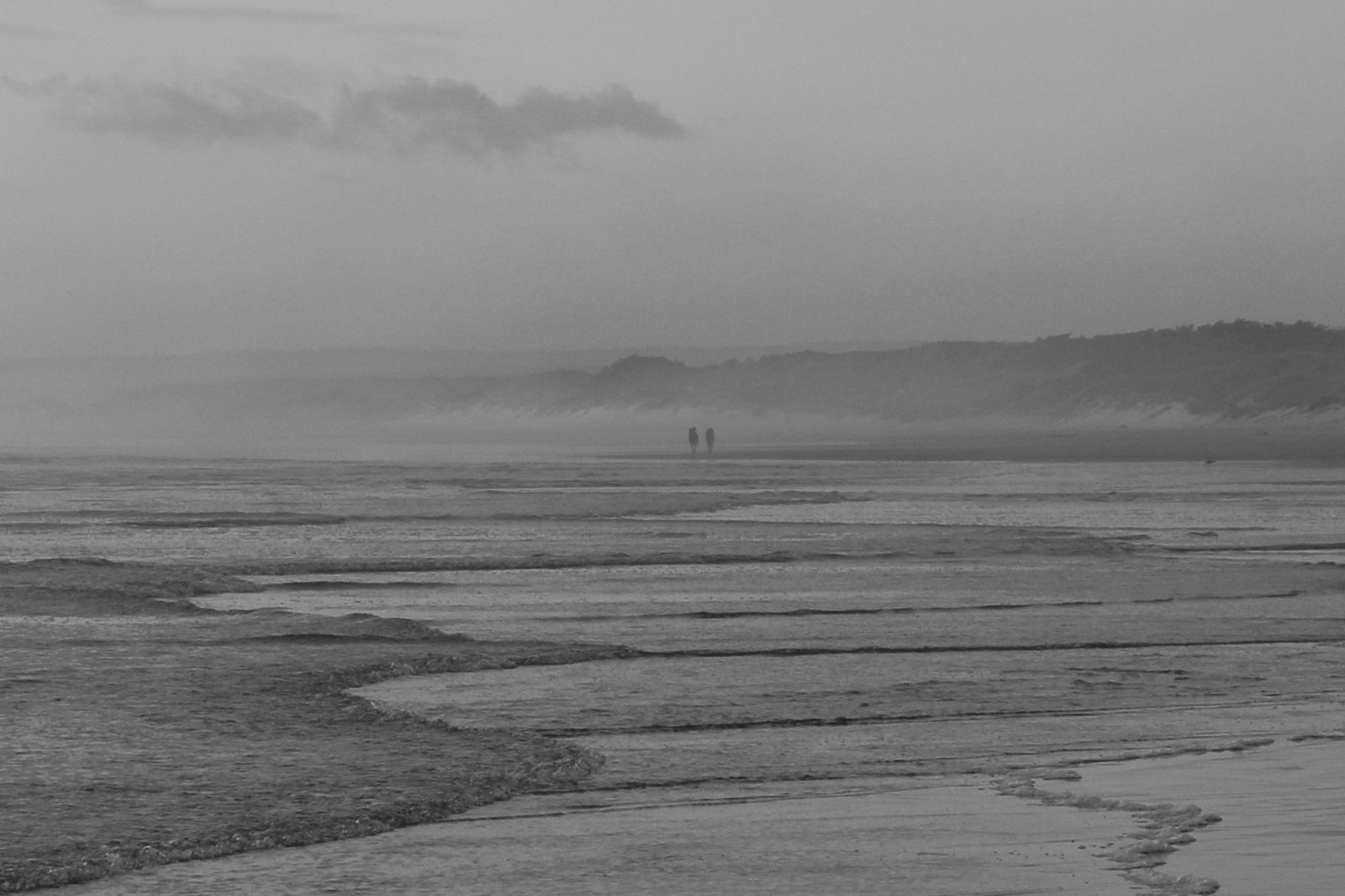
Day 1 – A late start
This was to be a big journey and began, as many big journeys do, far too late in the day. The coach from Auckland to Kerikeri ran late, the bus from Kerikeri to Kaitaia was hot, sticky, and laden with grumpy travellers, getting far enough clear of Kaitaia to begin hitching delayed us further, and the road north offered up only intermittent motorists. Our first hitch, a local, carried us sixty kilometres to just outside Te Kao and by the time we had walked clear of the little town and found another spot barely suitable for hitching the road had become so quiet that we began to think we would have to camp where we were and make for the Cape in the morning. At last, what would become our second hitch appeared, improbably, from the north, or rather it reappeared, a white rented touring van that had passed a few minutes earlier was coming back toward us.
Sue and her husband (I regret that his name escapes me) were former Brits who had arrived in New Zealand 15 years previous with four young children and spent 2 years touring the country in a minivan. By the end of their tour they had decided to stay and raise their children here. With their children all now able to fend for themselves they were doing a 5 day camper trip around the far north, one of the areas they hadn’t visited fifteen years before. We set off for the Cape again, Rose and I squeezed onto a bench seat without seatbelts as we hurtled around the tight bends of the Far North Rd, swapping stories of travel and New Zealand along the way, where they took a photo of us to mark the beginning of the walk and we thanked them profusely for coming back for us.
By dint of the above delays, it wasn’t until after 6pm that we reached the lighthouse at Te Rerenga Wairua, and could look out at the lone pohutukawa tree that clings improbably and defiantly to the sheer rock face. Not that the lateness of the hour really mattered, we were giddy and grinning. Having reached the northern most tip of Te Ika-a-Māui – New Zealand’s North Island – we were eager to take those first intrepid steps south.
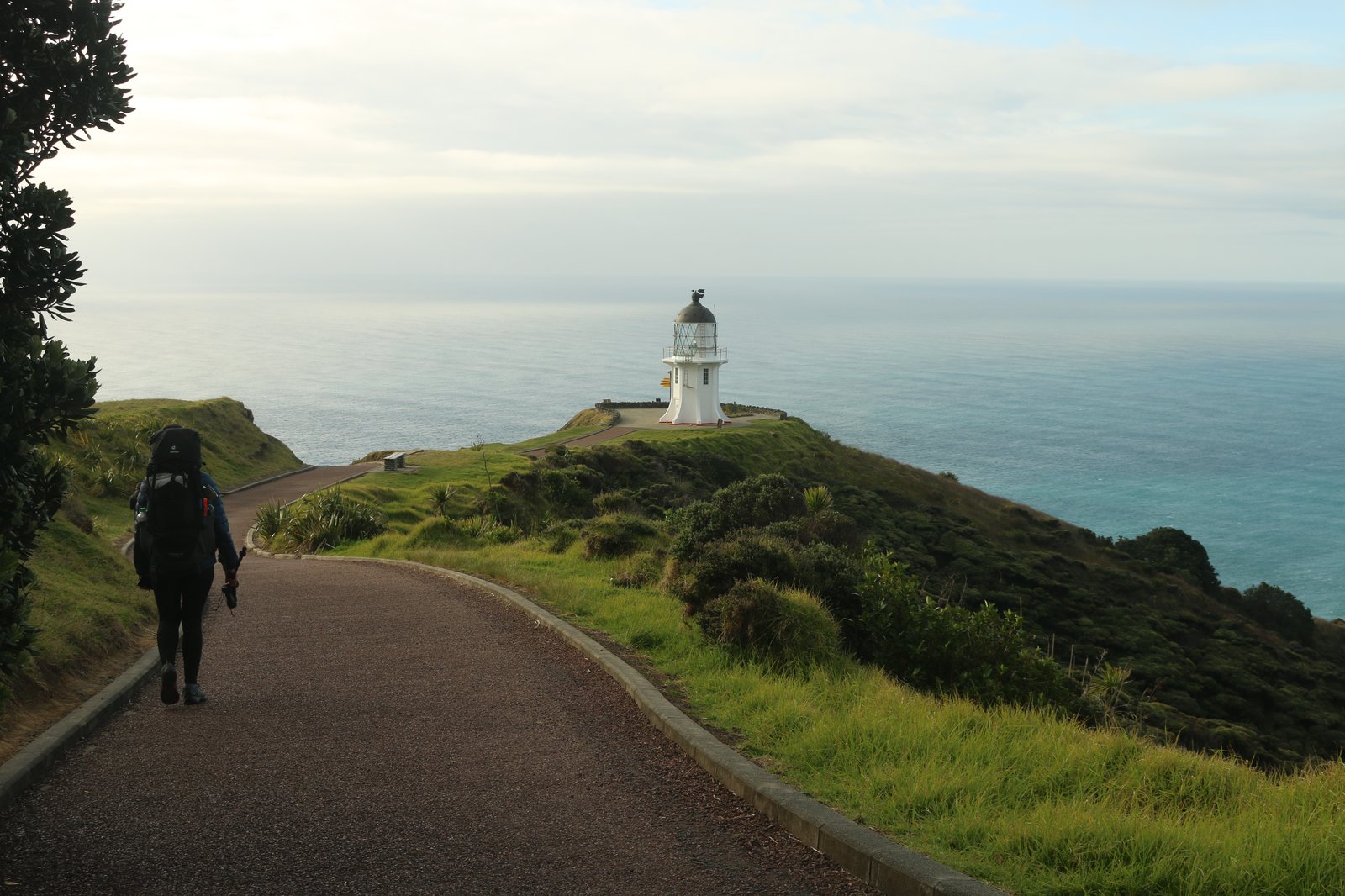
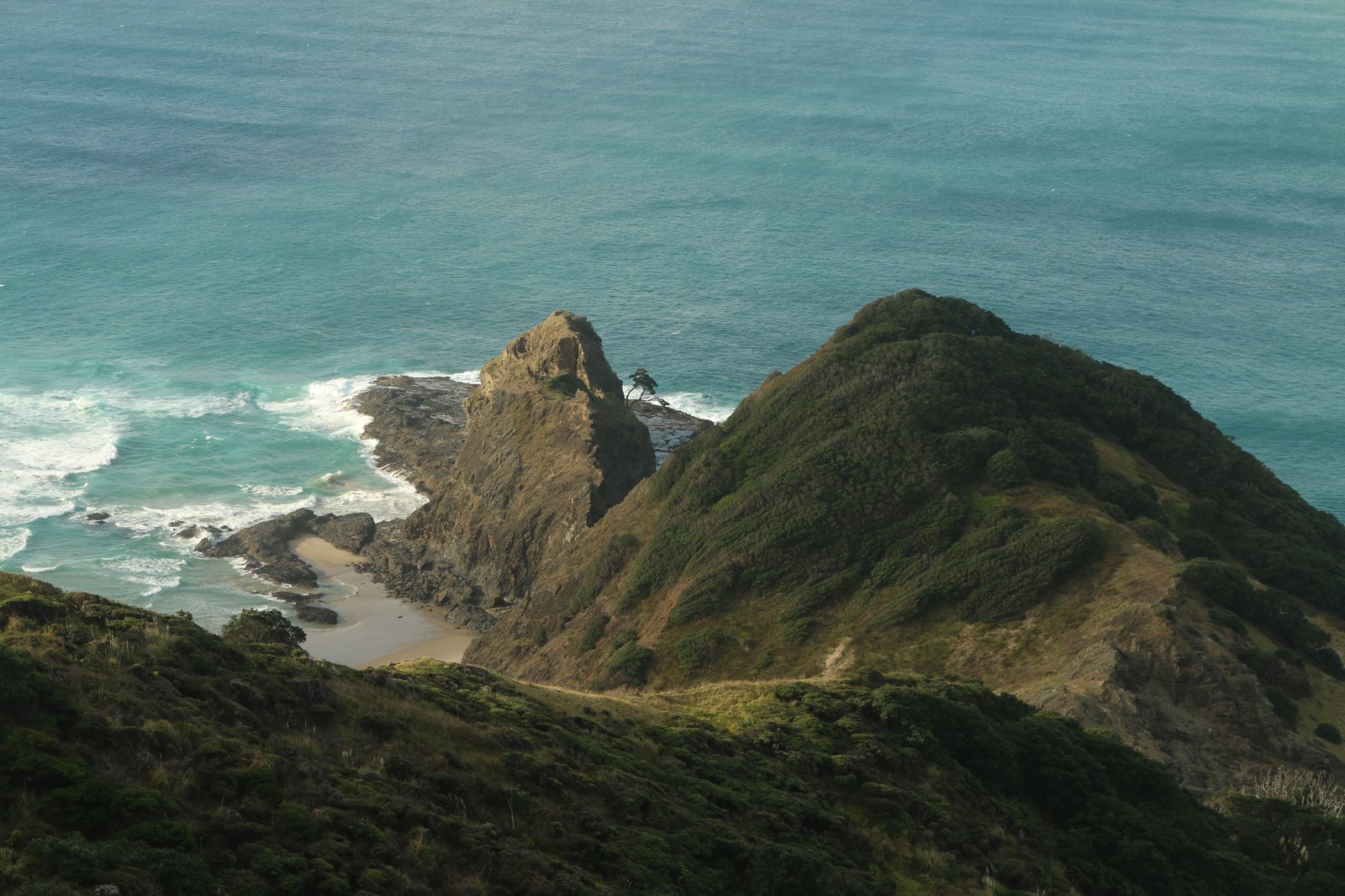
The sun was setting as we marched along Te Werahi beach, removing our shoes to cross a stream before clambering up towards Herangi Hill. Naively we had both pictured Ninety Mile Beach beginning almost immediately from the lighthouse so were surprised to be treated first to scenes that evoked an alien planet, dark red dunes and rocky outcrops that would have looked at home in a big budget sci-fi franchise. We weren’t going to make it to Twilight Camp and, as last light turned to dark night and we weighed the merits of pressing on in the dark or camping amongst the dunes, it began to rain. Taking that as a sign, we hurriedly pitched the tent amongst the sand dunes, ate lightly, and lay awake in a sort of ecstatic bewilderment at the prospects of the adventure that we were just now beginning to comprehend.
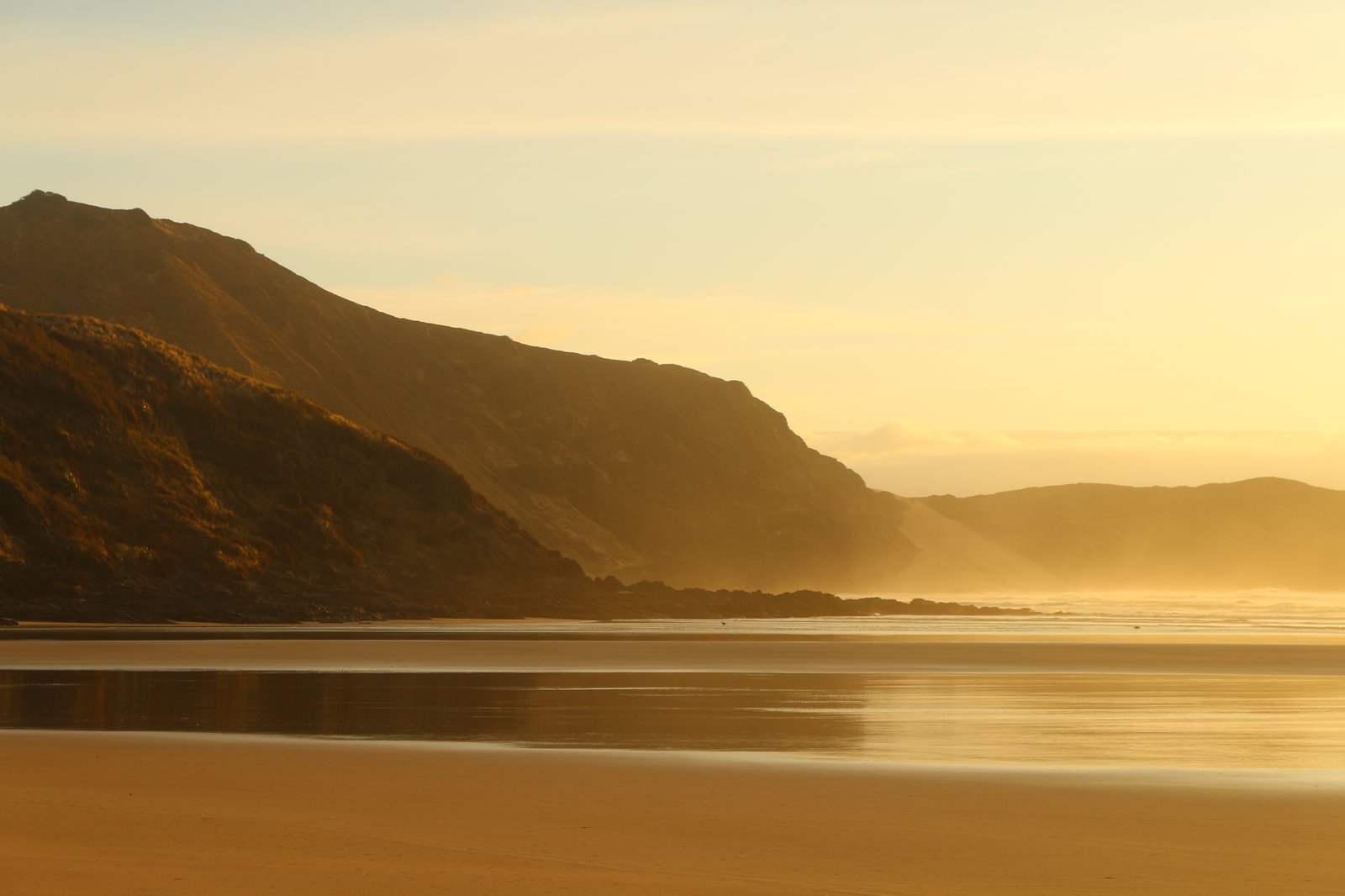
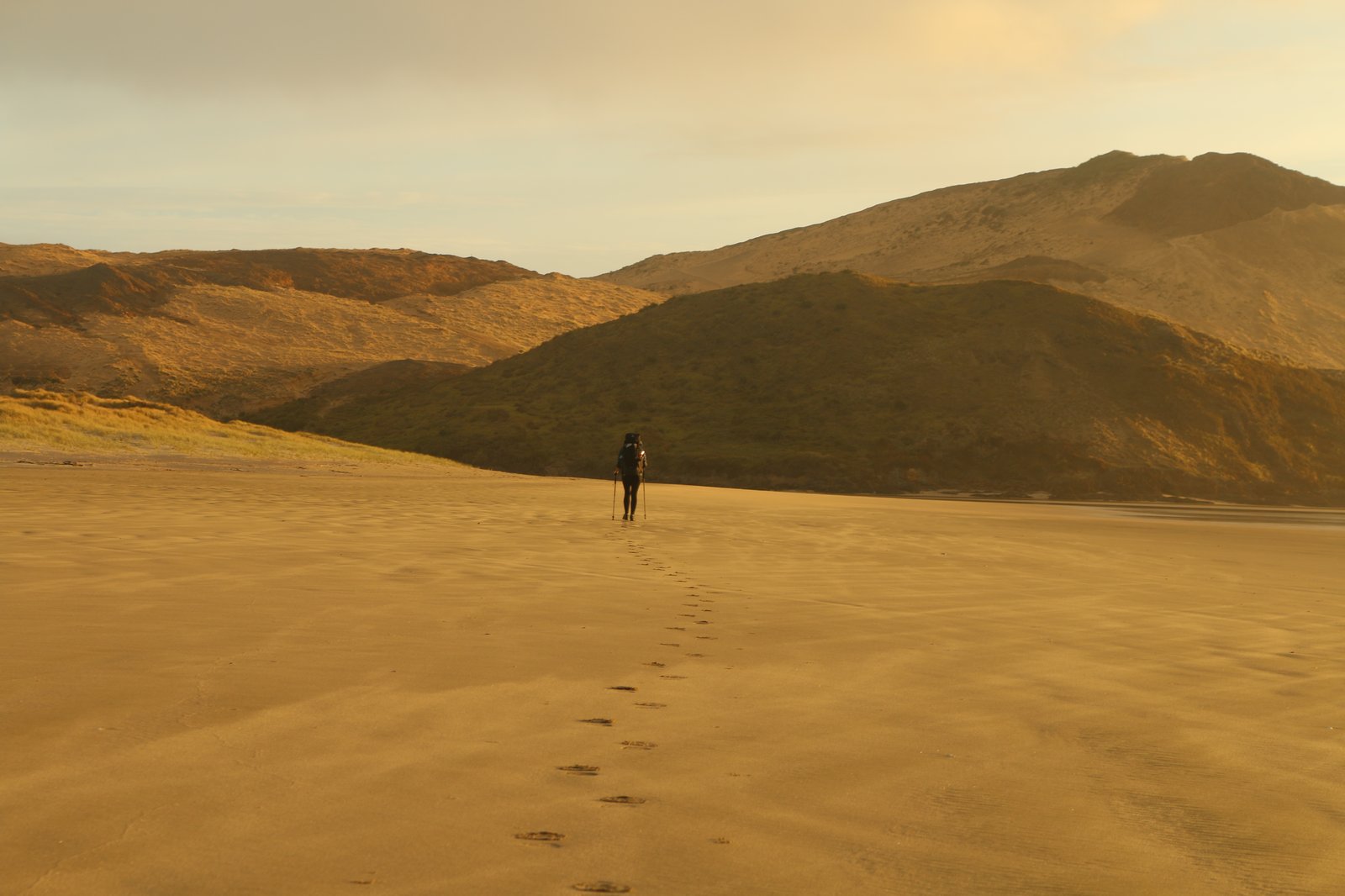
So it was that on the first day of what would become a journey of more than three thousand kilometres we covered barely seven.
Day 2 – A full days walk
In the morning Rose made the first of the trips probable 240 servings of porridge while I packed away the tent. Climbing out of the sheltered hollow in which we’d camped we took a better look at the striking lines and colours of the landscape and headed on toward Twilight Camp, where we had intended to spend that first night.
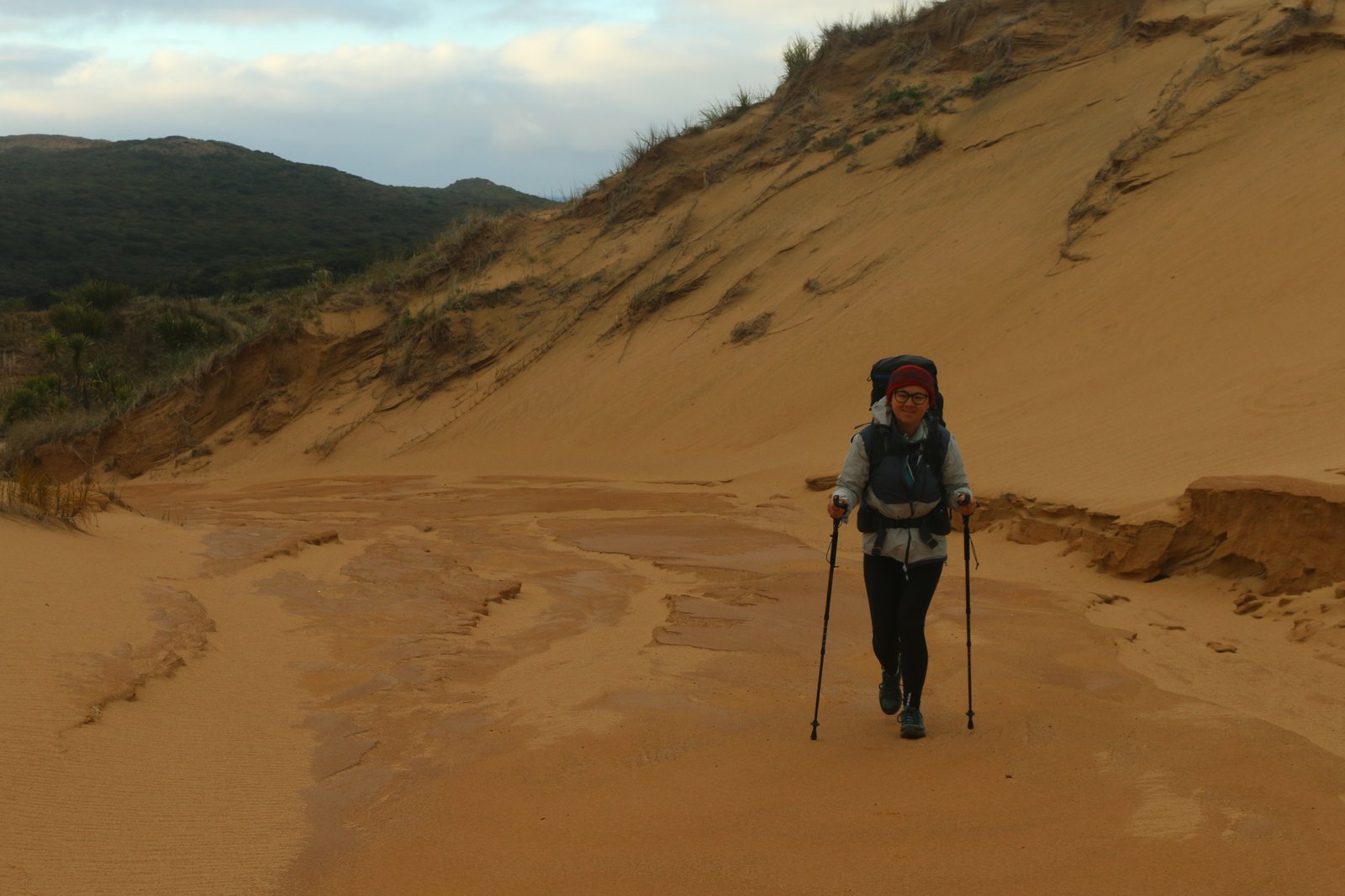
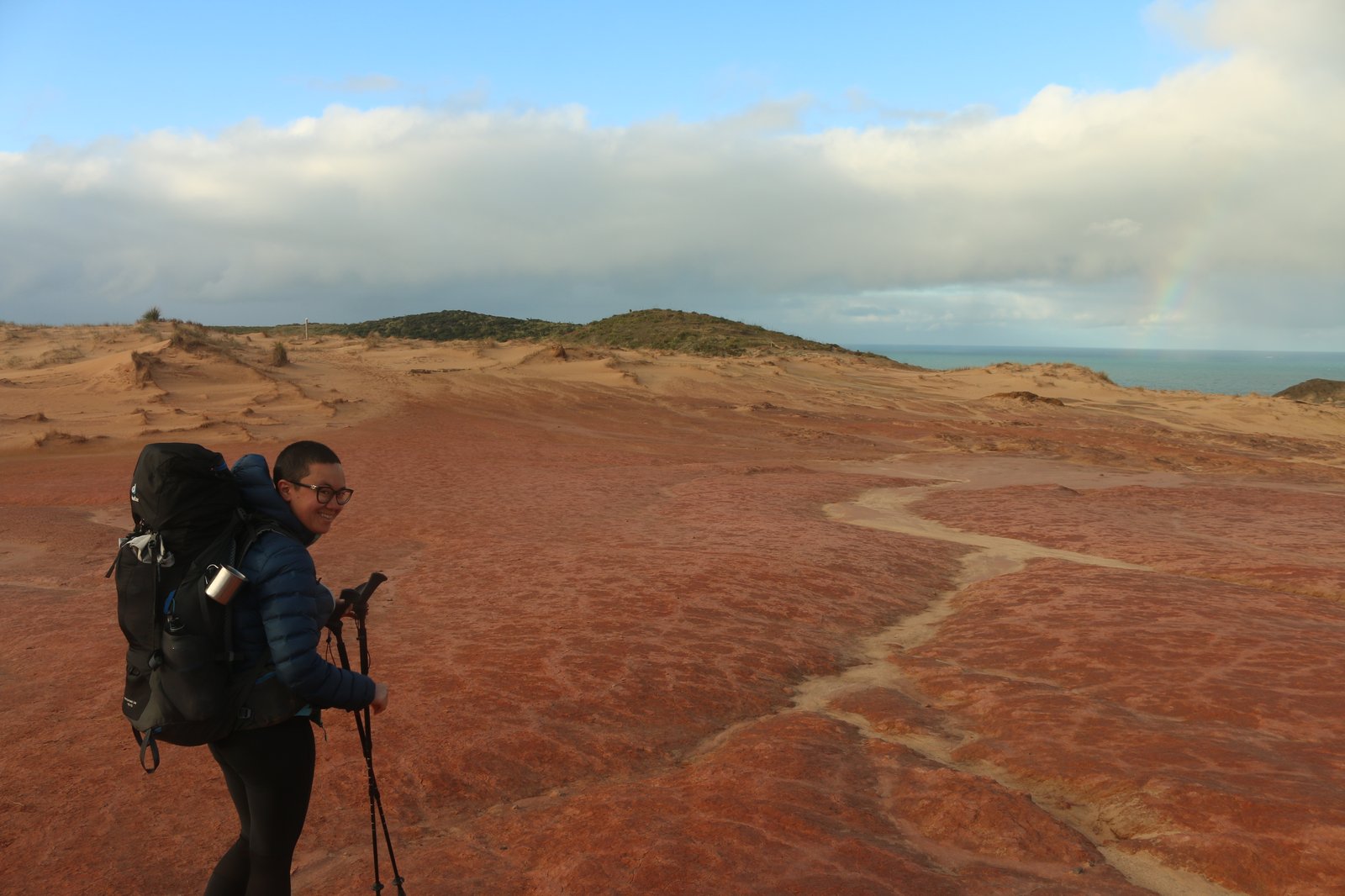
Almost no sooner had we begun walking did we meet Kath, our first Te Araroa encounter, coming the other way. Kath was section hiking the TA, and had opted to complete the beach section going northbound. Our second encounter soon followed when, arriving at Twilight, we came upon two tents. Mitch and Olaf were just stirring as we arrived – Olaf a little less enthusiastically than Mitch. Hopeful through-hikers like us, they had chucked in their jobs in Auckland and (that we know of) are the only other hikers to have started the TA on October 7th, 2020.
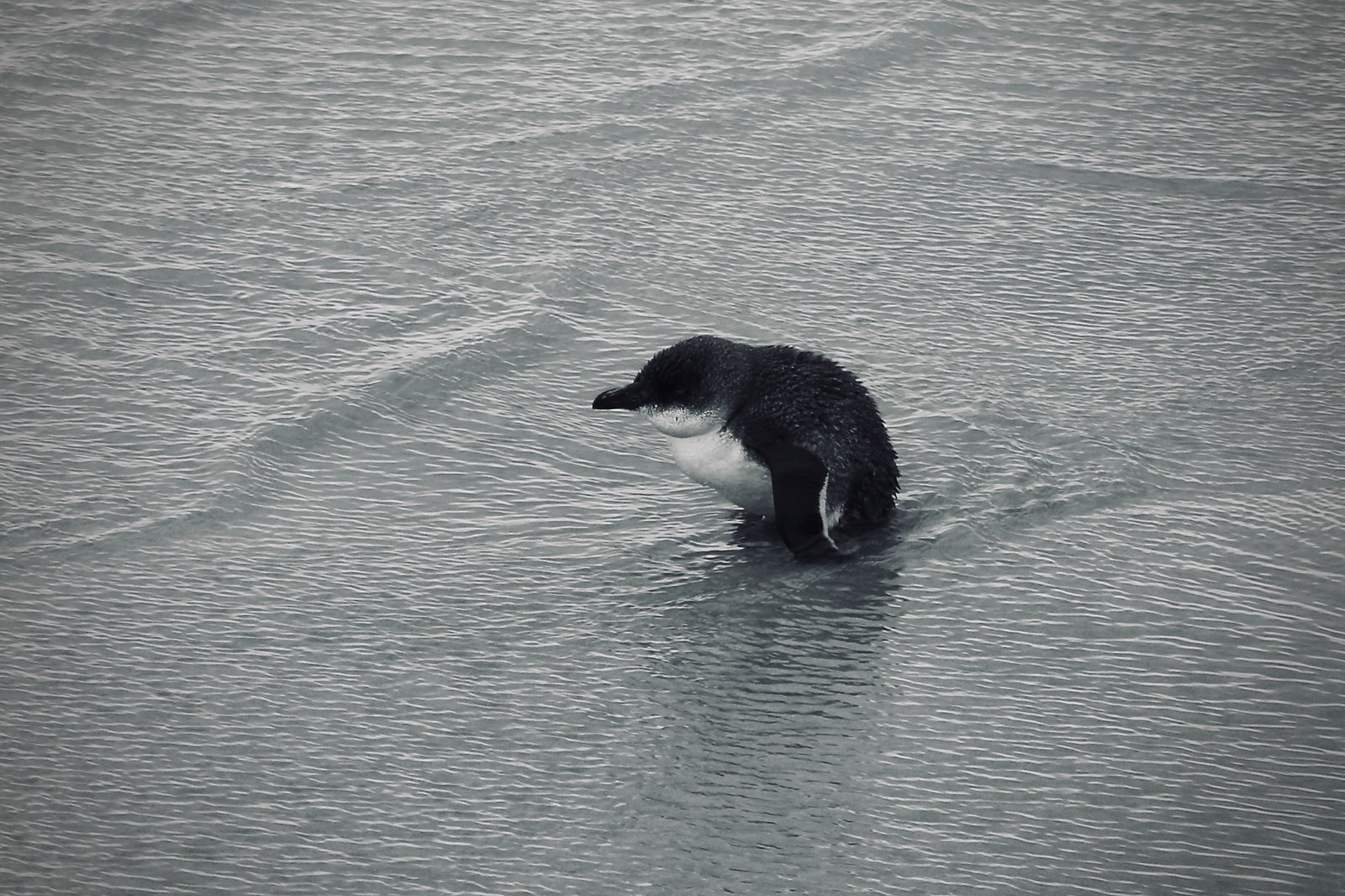
Between the camp and Tehepouto Point we came across a profoundly grumpy looking blue penguin (alive), a small shark, and several fish (all deceased). Atop Pukekarea headland we stopped to take a long look at the beach ahead, stretching away to the edge of the world, an order of magnitude larger than the two behind us.
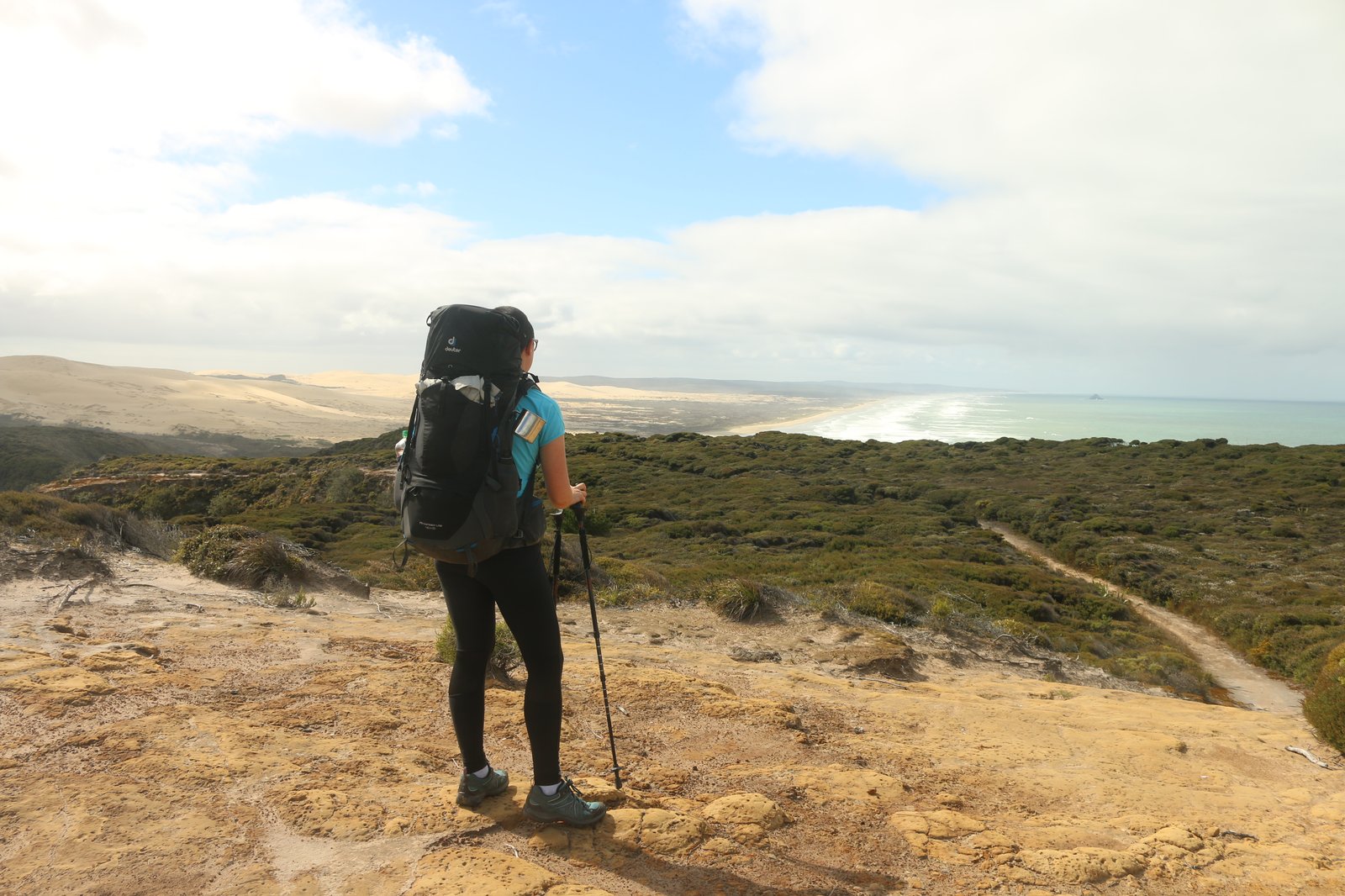
Descending to Ninety Mile Beach, where we were to remain for three days, part of the psychological element of the beach became apparent immediately. No landmarks. No headlands before us, no trees visible behind the dunes, almost nothing punctuated the marbled surface of the beach nor the saw-edge of the dunes that would be our constant companions. We began to measure our progress on much smaller scales, any distant piece of drift wood was studied at length as we tried to gauge it’s distance. Is that five hundred metres away, or two thousand? Or is it an aberration altogether? Our exposure to the wind was revealed when a northerly wind rose shortly before midday, pushing us gently down the beach. Later when the Aupouri Forest came into view behind the beach we were struck by the character of this windblown and sand blasted shock of green that looked to be all that restrained the encroaching beach.
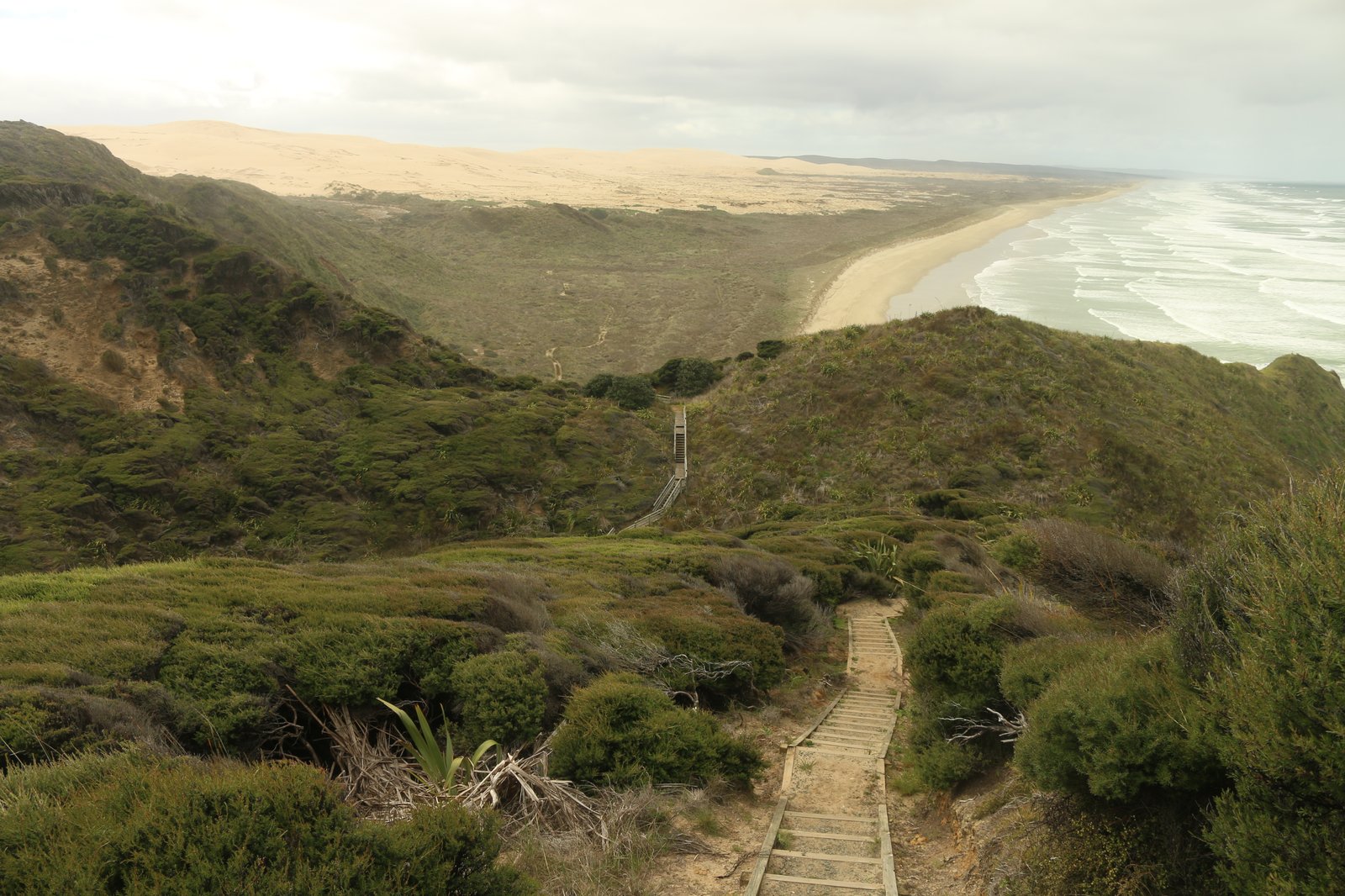
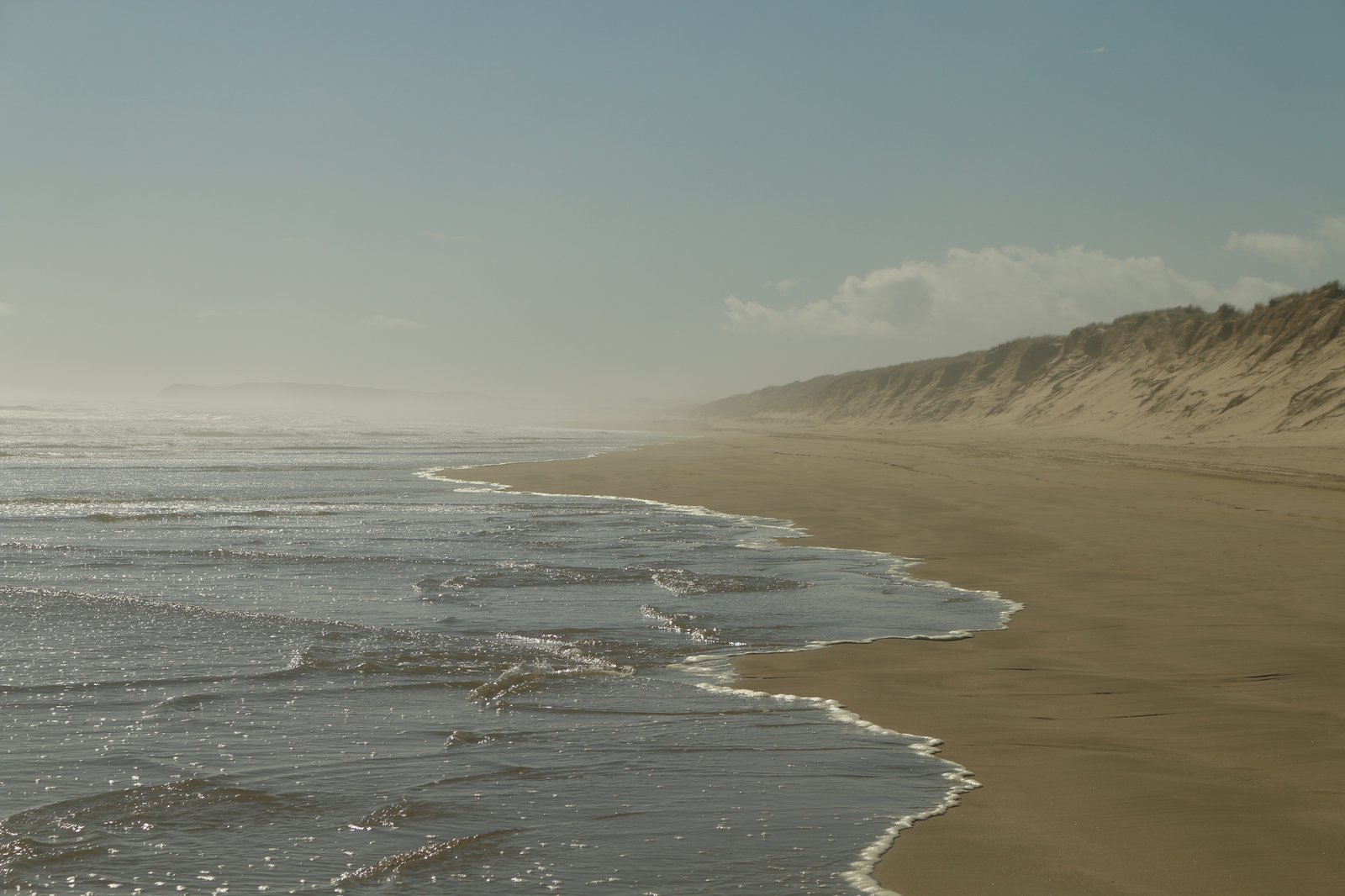
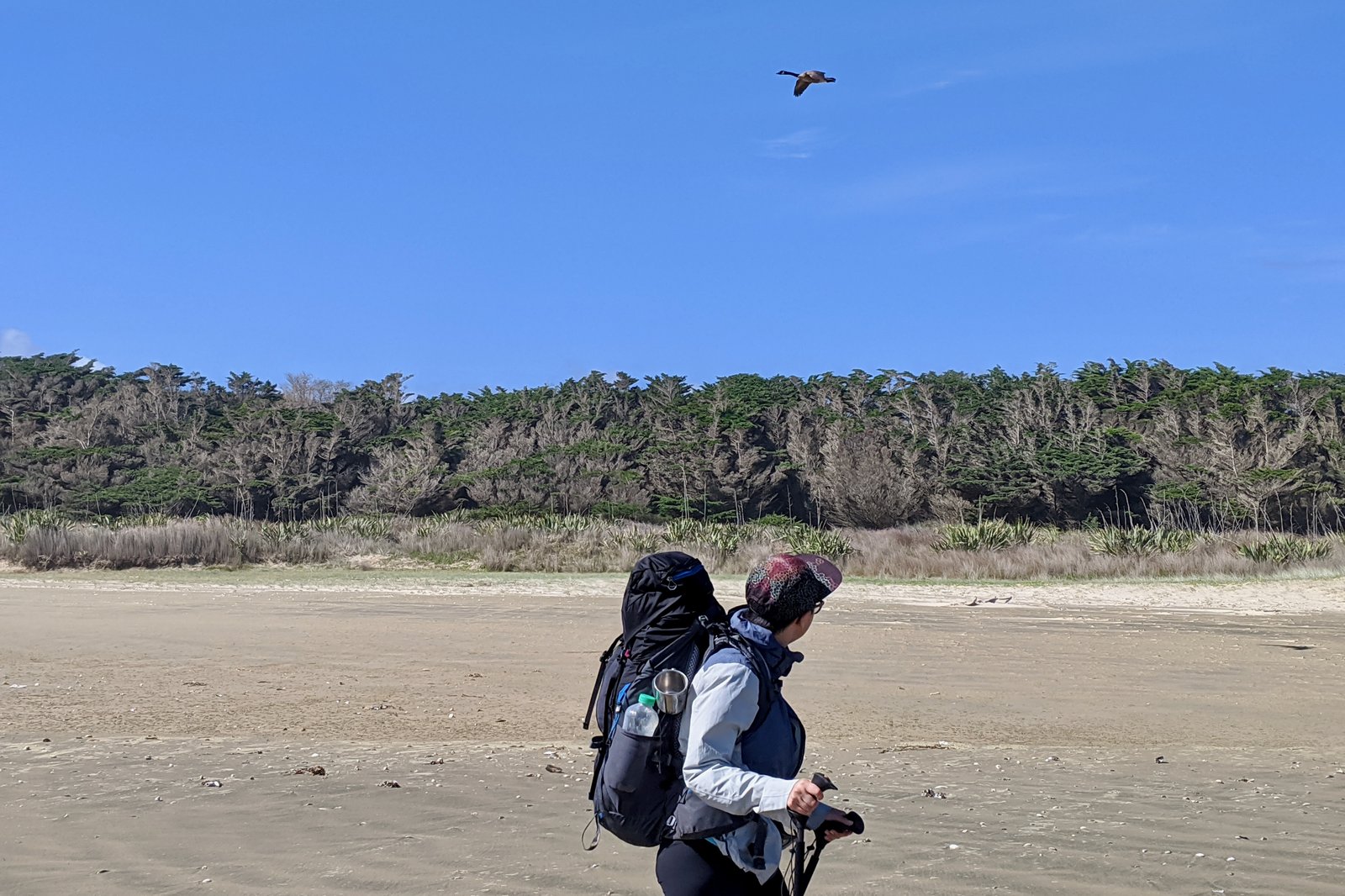
At lunch time we tucked ourselves into a cleft in the dunes and warmed up the stir-fried vegetables left over from our last kitchen meal at the hostel in Auckland. All was well until the wind swung round to the east and we had to hunch over our pots to shield our grub from the sheets of sand being whipped off the tops of the dunes. Mitch and Olaf trooped past further down the beach, unable to see us in our hollow, or to hear our calls over the howling wind. Maunganui Bluff was now in view but seemingly came closer only by inches for each mile we covered, the unyielding surface of the beach had reduced our feet to a singular stinging sensation. For a couple of hours we trailed the boys, gaining on them as they took several small breaks, the last of which we joined them for before we took the lead.

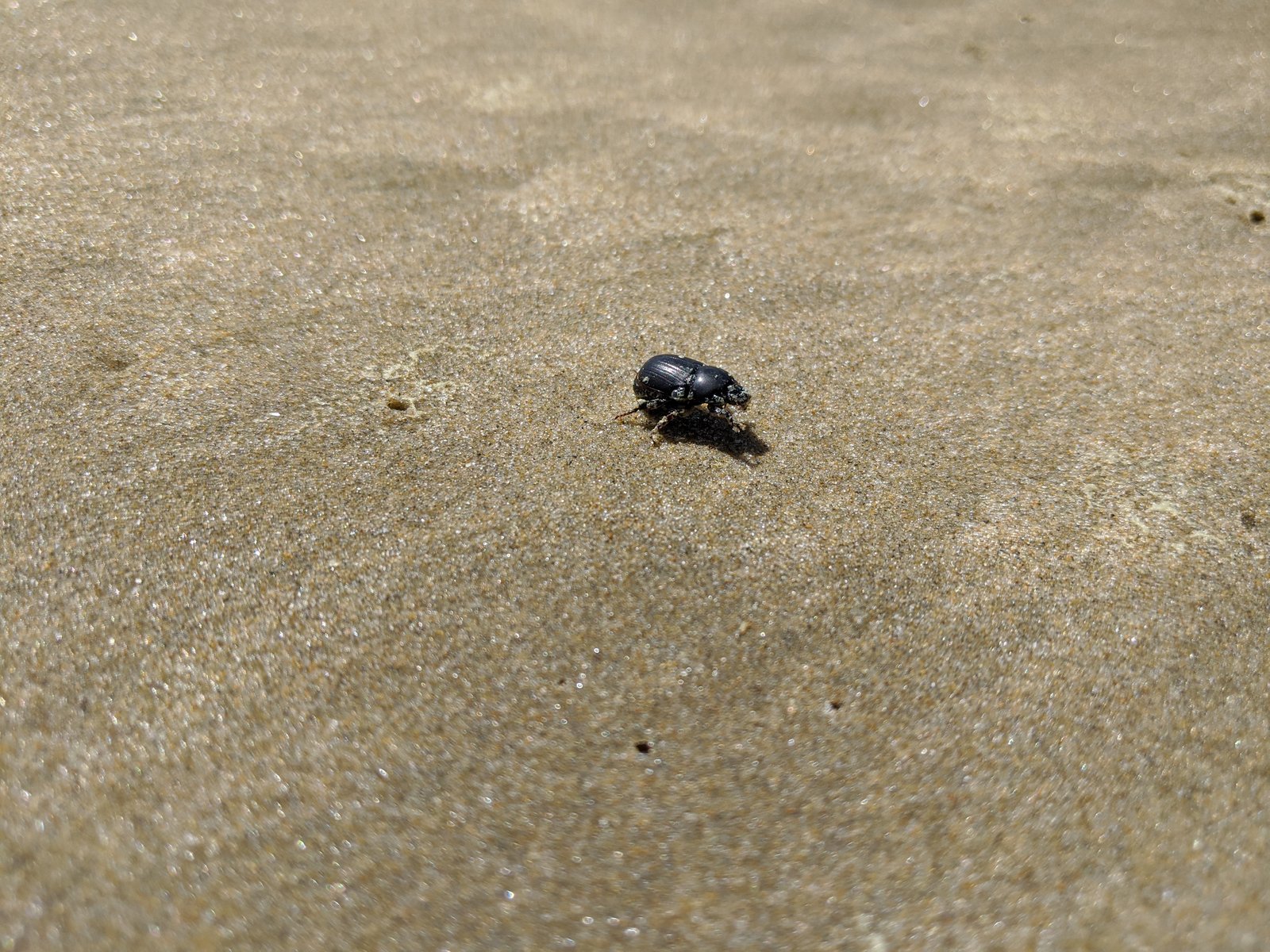
When at last we hobbled into the campground beneath the headland we couldn’t get our shoes off fast enough but were deeply satisfied to have walked almost thirty eight kilometres on day two! Mitch & Olaf arrived some time later, establishing on the first full day the abnormal walking methodology we would come to know them by – start late, finish later. As dusk turned to dark a half-dozen wild horses, two colts among them, wandered timorously to within a few yards of the tent and took up grazing.
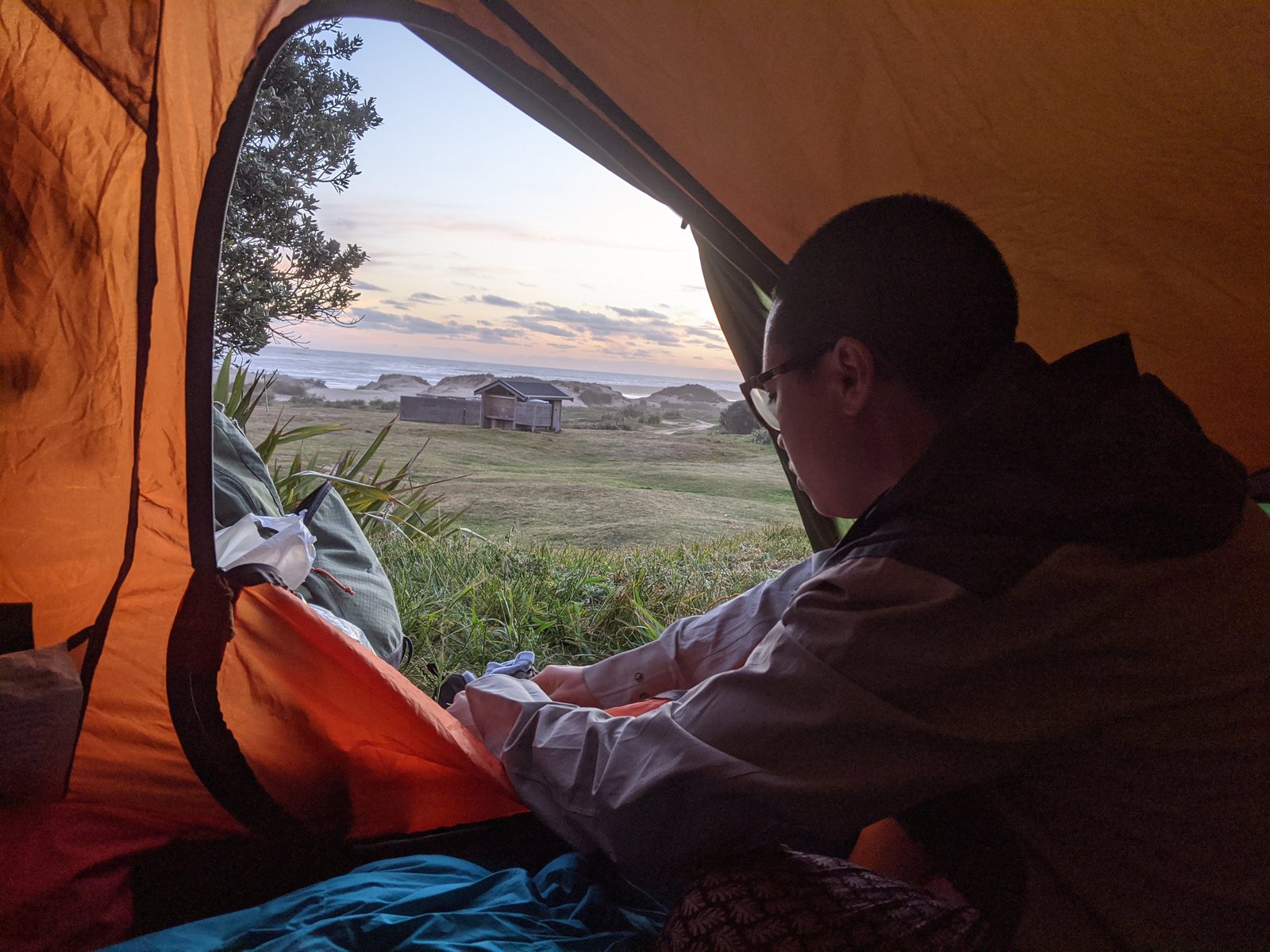
Day 3 – Allergies abound
The following morning was a repeat of the previous, we left Mitch and Olaf to their stupor and set out on the sand. Little black beetles were a frequent sight, scurrying too and fro, burrowing occasionally. The beach was dotted with star fish and skeletal remains of larger fish, Canada geese honked overhead, and oystercatchers strutted back and forth at the waters edge, riddling the beach with holes using their long Pinocchio beaks. The wind was fierce, coming from the east again, and very quickly the constant sand and copious pollen swirling in the air triggered a strong allergic reaction in Rose. This had been one of our fears, that Rose’s allergies might mothball the walk completely, but we hadn’t expected the beach to pose such a battleground. Rose fought gamely and we took frequent breaks to let the panic in her body ease, but by mid afternoon she was really suffering and we began looking for somewhere suitable to make camp. The search for a spot with any shelter bore little fruit, eventually we settled on a shallow bowl amongst the sand that muzzled the wind from a howl to a growl. In the tent, isolated from the elements, Rose could breathe a sigh of relief and let her symptoms slowly abate.
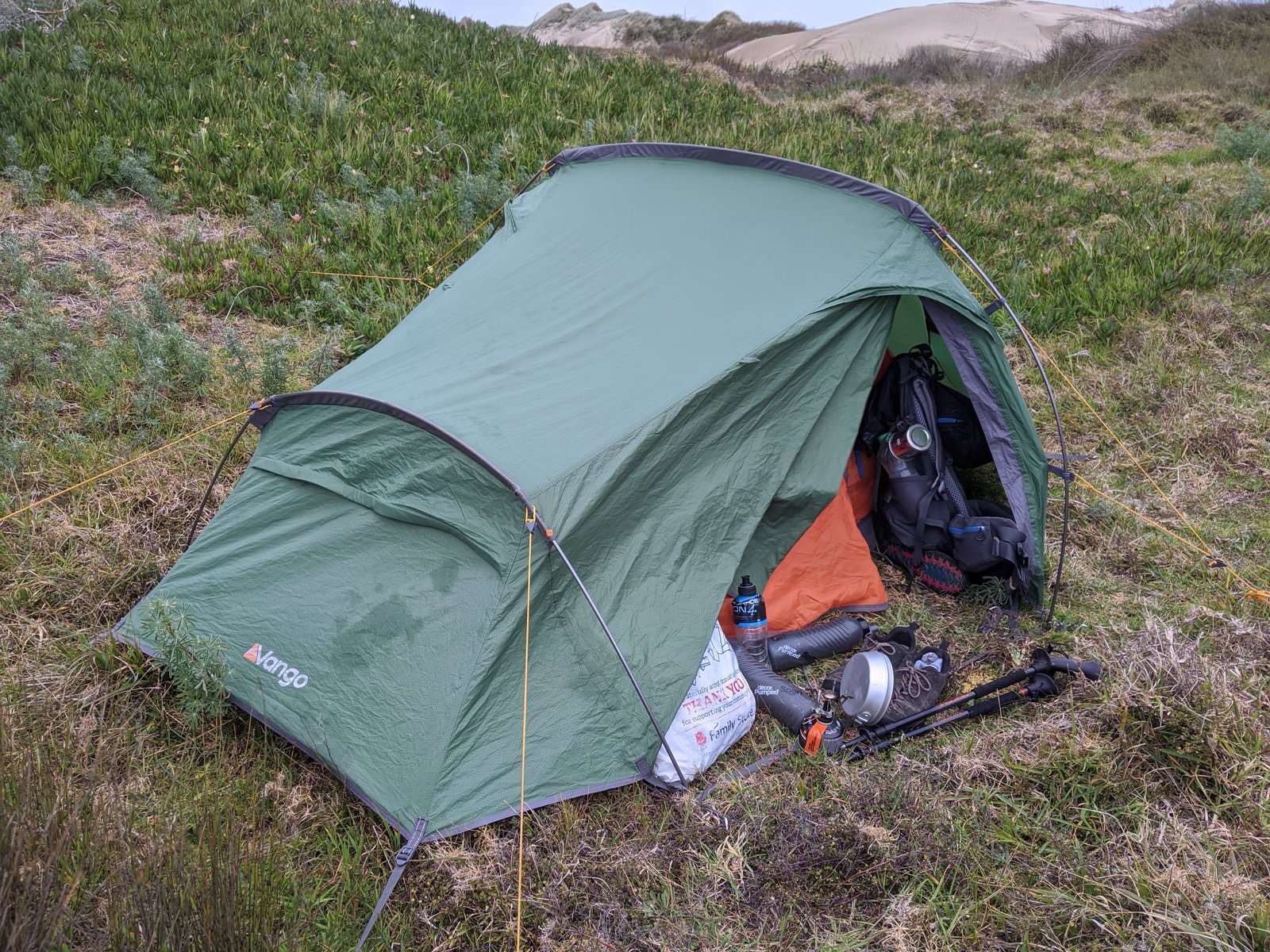
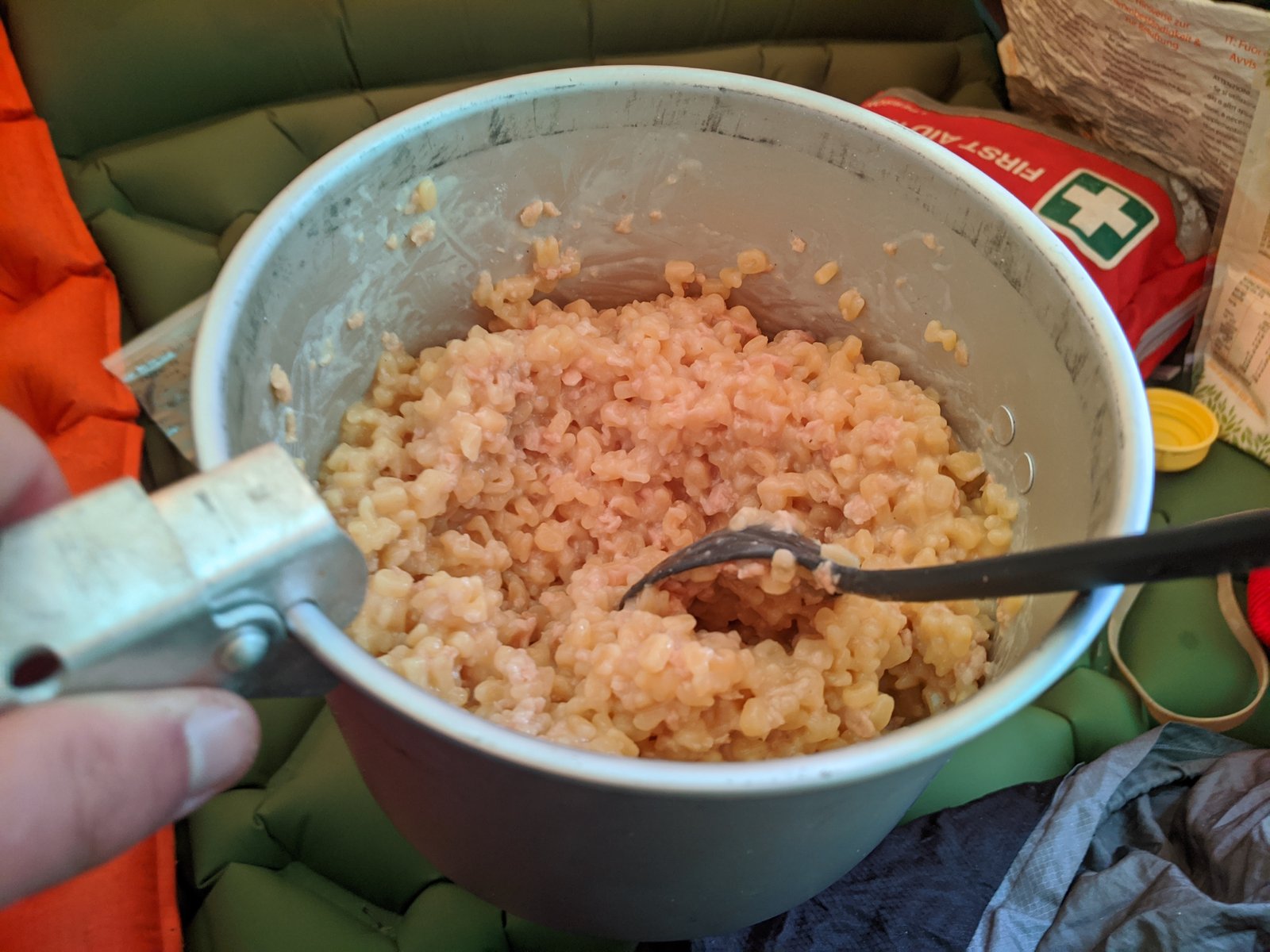
We’d put thirty kilometres between us and last nights camp, only a couple kilometres shy of our goal, leaving thirty five for the finale.
Day 4 – To the beaches end
The wind was kinder for our final day at the beach, Rose’s allergies were still present but, by wearing a mask and resting occasionally we were able to make good time. We did run out of water though. All the streams that reach the beach had dried up, I followed one a ways inland when we grew thirsty but found nothing. Eventually we did reach a flowing source, and vowed to carry more reserve water in future. At lunch I discovered that a hole had already appeared in my socks. The catalogue of deceased fauna grew to include a puffer fish and a large seal, the latter half buried by the wind and sand, we also sighted a handful of whale teeth.
By late afternoon we caught up to the lads, who were collapsed on the beach, nursing their battered feat – each had about twelve blisters, though Mitch took a certain pride in his. When we expressed surprise that it had taken us so long to catch them, they confessed having hitched twelve kilometres when the pain grew too great and a passing motorist offered them some relief. We also learned they had christened me with a trail name, Punch, on account of my habitual use of the phrase “we’d better punch on”.
As Ahipara loomed ever nearer we were almost at the limit of what our feet could bear, the final five kilometres of beach were agony, the arches and balls of my feet crying out with every step. Stepping off the beach felt triumphant but we were immediately confronted with the need to walk another kilometre to the other end of town – the tarmac was torturous under foot, and we limped more than walked.
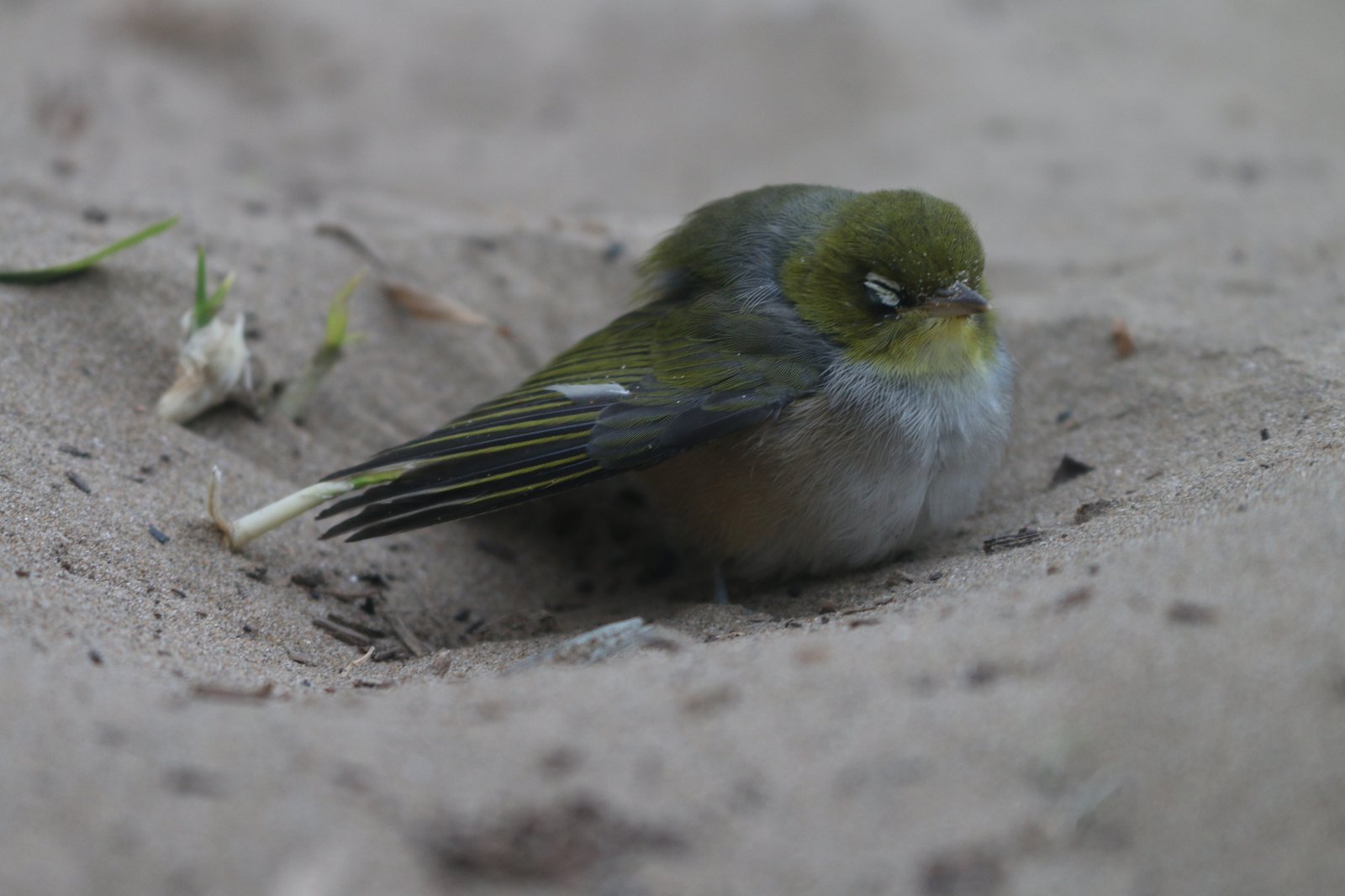
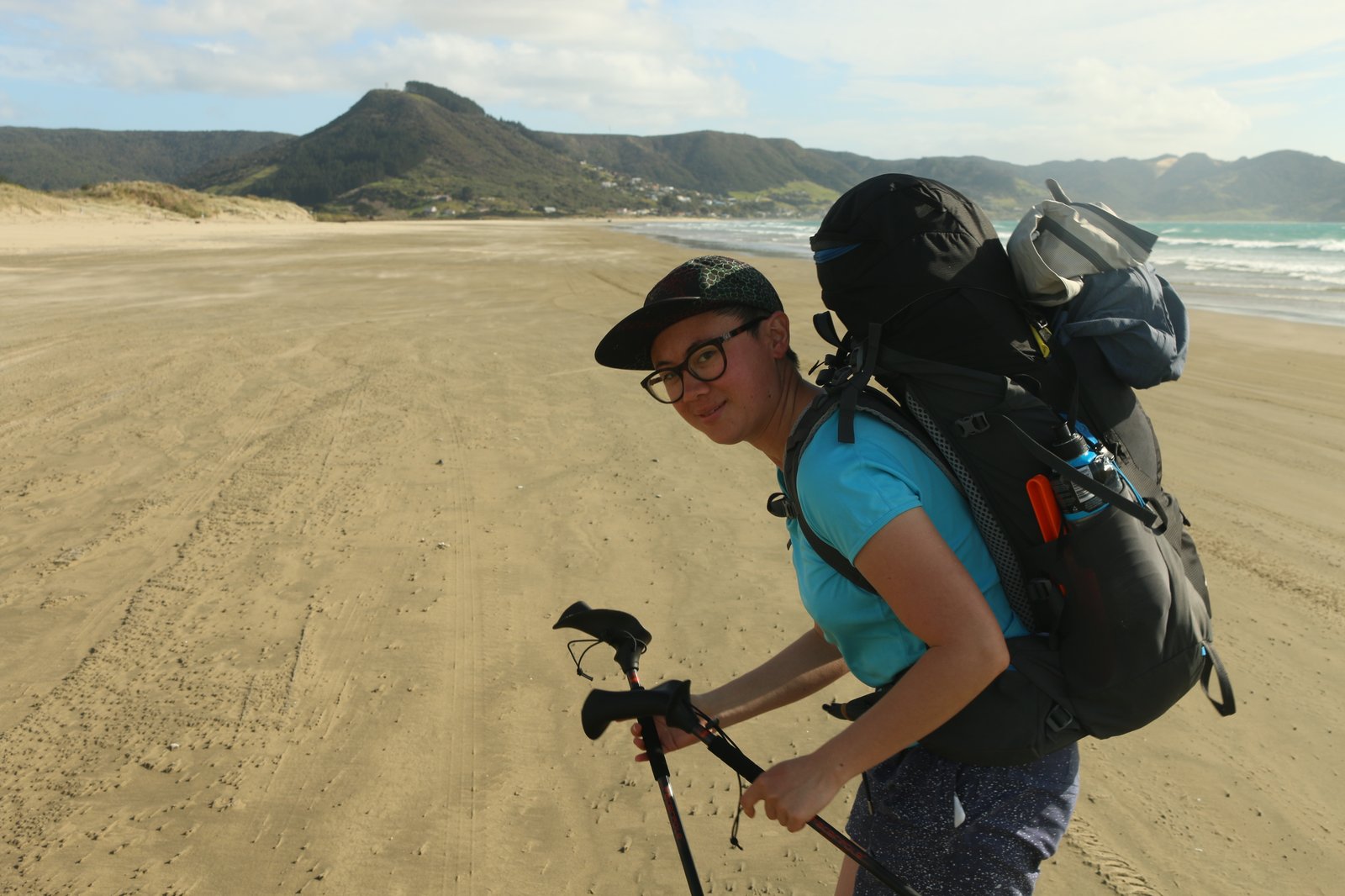
To celebrate the completion of the first leg, the coarse gauntlet, we ordered veggie burgers and chips at the takeaway and collapsed into the blue benches out front. We caught a few sidelong glances as we sat nursing food and feet. As we got up to leave a middle aged man in a van, Jean, and his young son stopped to ask us about the beach and the trail and to wish us luck for the journey to come. We camped on the beach, a last night listening to the lap of the waves, that pleasure only moderated by the sound of cars and dirt bikes tearing about further up the beach late into the evening.
Day 5 – A taste of road walking
Sunday was to be our rest day, or half day at least as we still had sixteen kilometres to walk between Ahipara and Kaitaia. This was the first of many sections of road walking on the North Island that many people choose to skip/hitch.
I’ll digress here to explain that I decided before the walk that I wanted to travel every forward kilometre under my own steam, so as to draw an unbroken line from Cape Reinga to Bluff. This continuity appealed to me, though I don’t necessarily recommend such masochistic inflexibility to everyone.
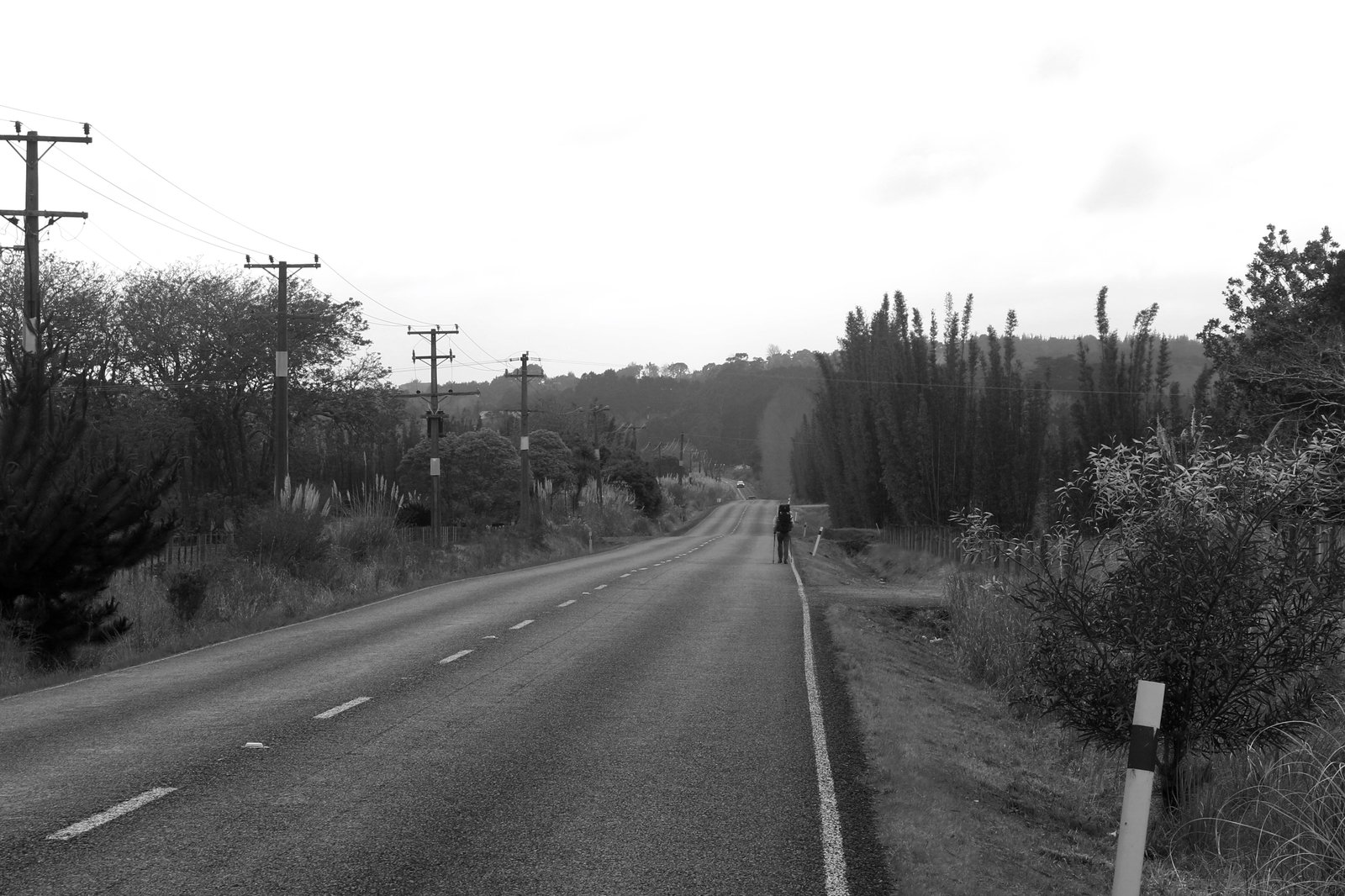
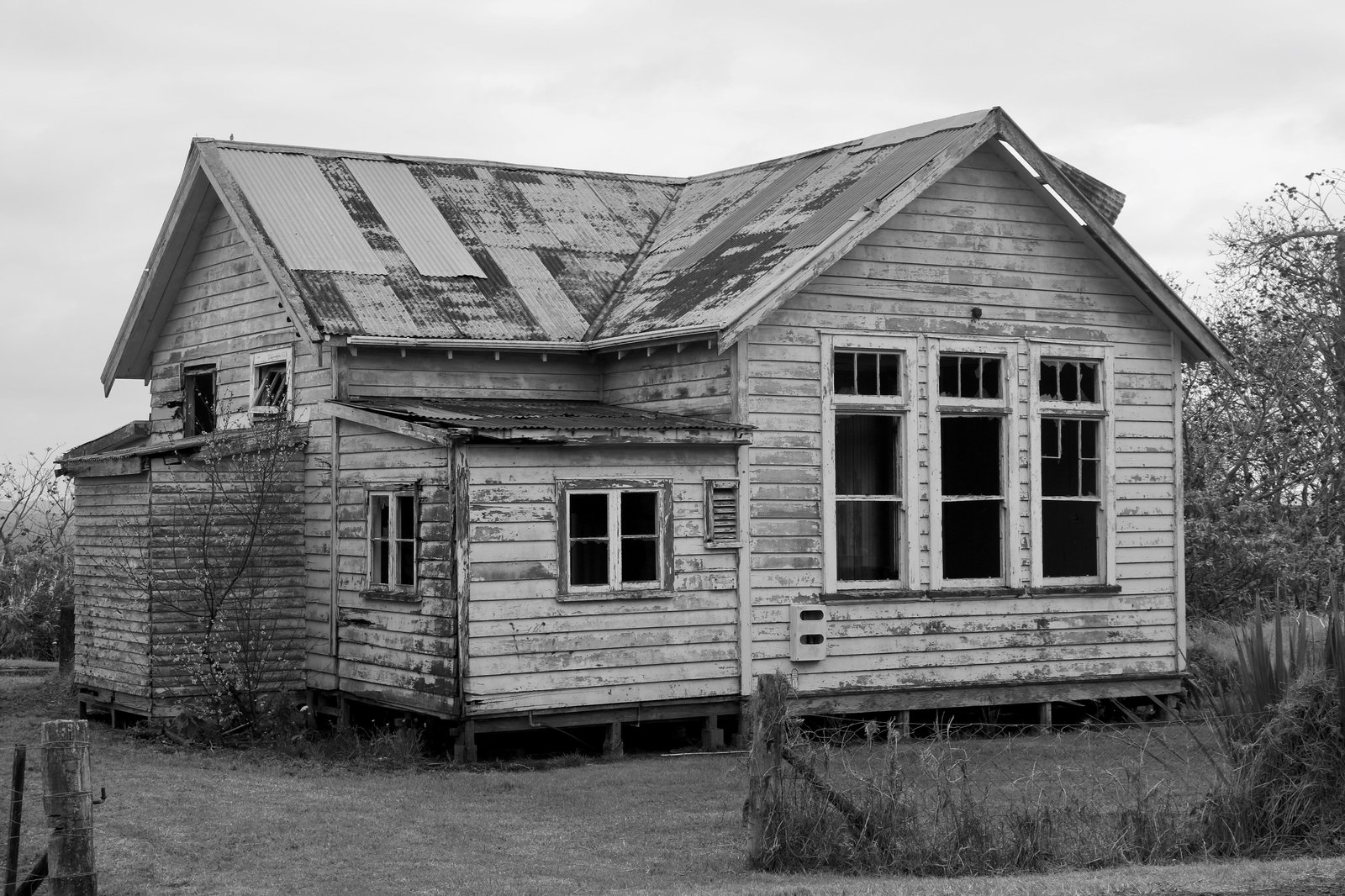
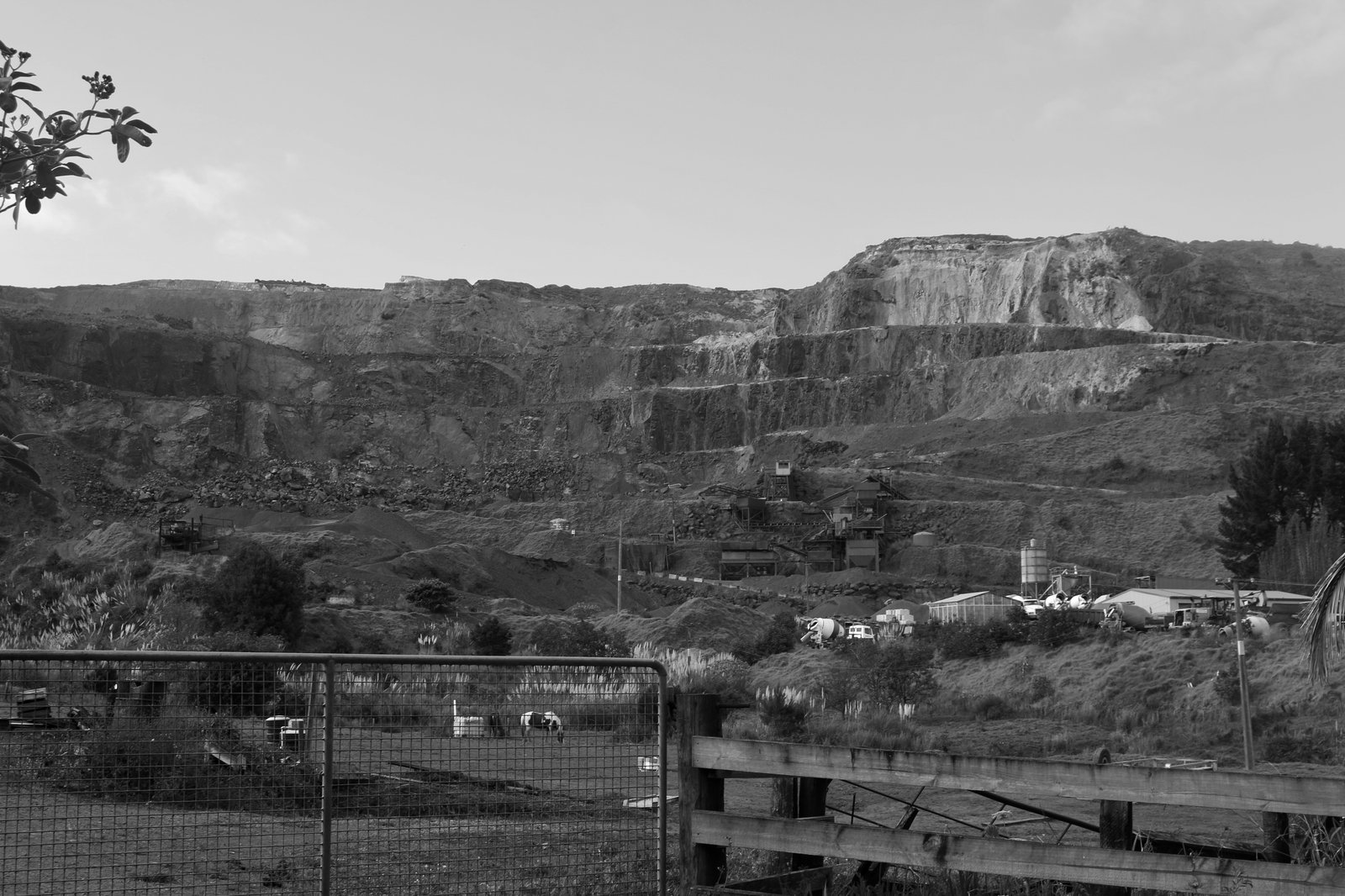
We reached the hostel in Kaitaia by 11am. The friendly receptionist said she could put us in a dorm with another walker, and pleasantly that turned out to be Kath. I hand washed our clothes while Rose ventured out to buy food, and we cooked up another load of veggies to provide a couple of lunches in the next section. We spent the evening with Joel and Alice, another couple walking the TA, from whom we came to better understand our good fortune in not having developed any meaningful blisters on the beach. Joel was suffering with an extraordinarily swollen toe – so severe that the nail had sprung free! – that was sure to take a long time to heal.
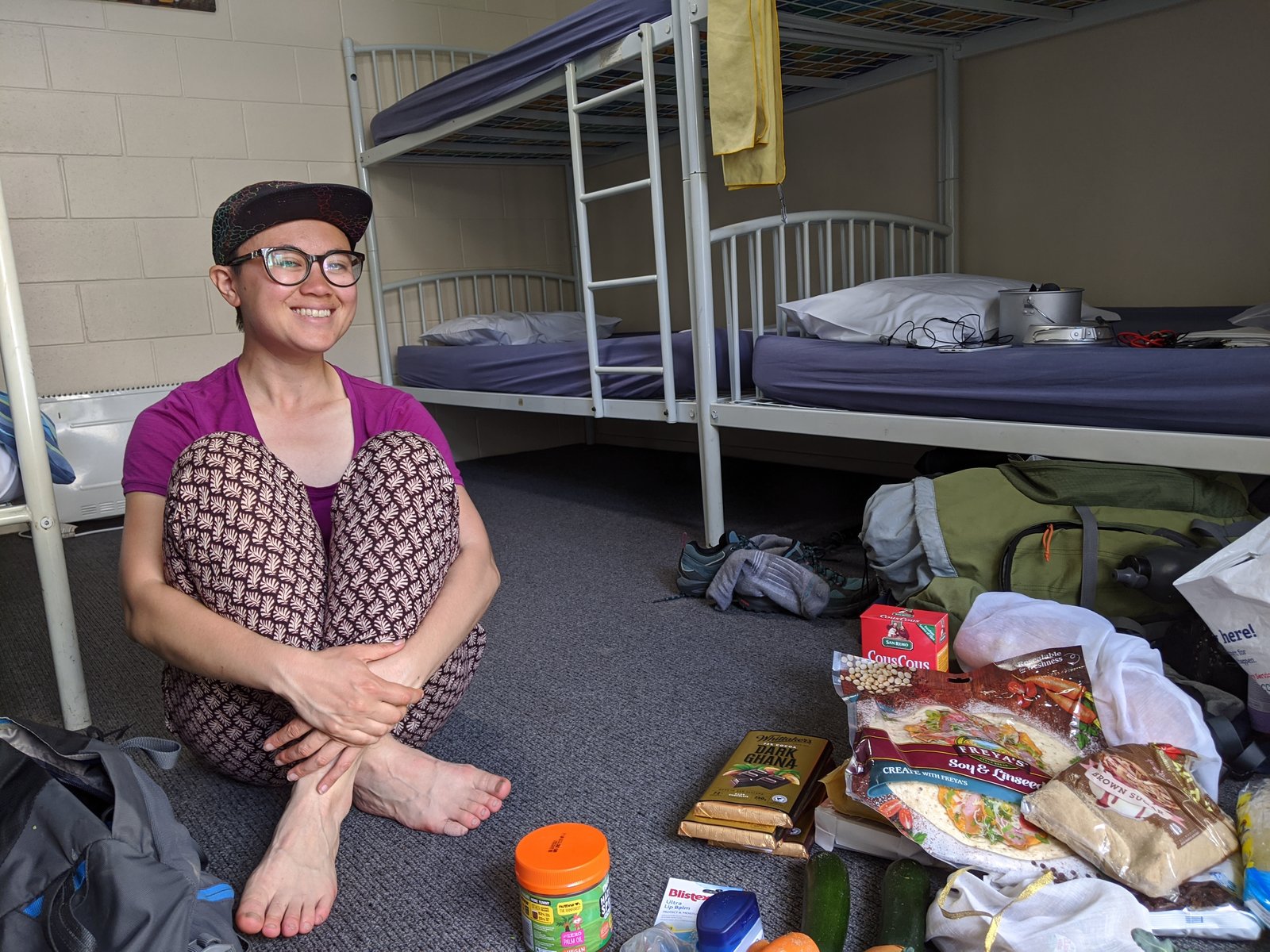
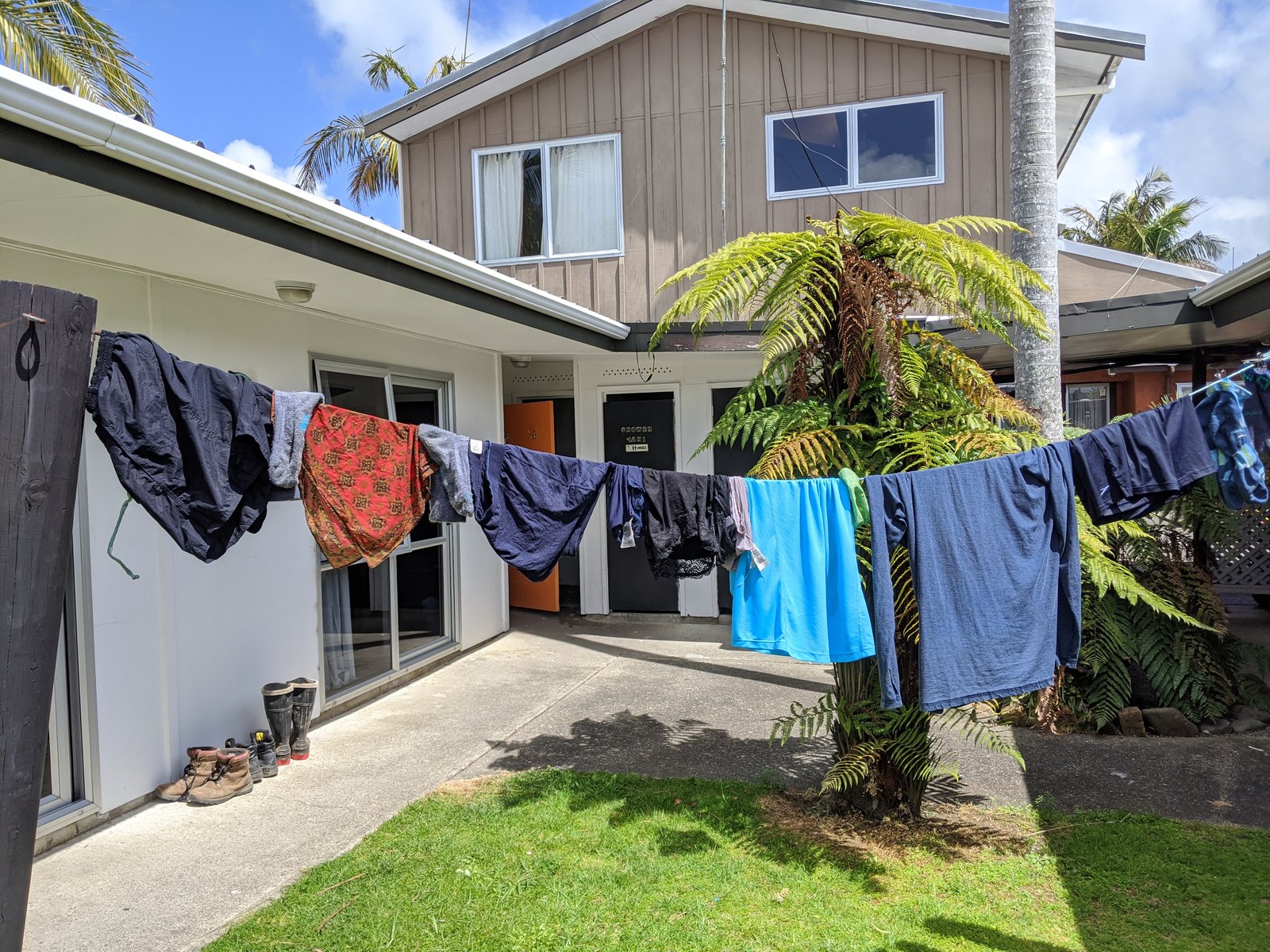
Ignoring the seven kilometres of our first evening, the Ninety Mile Beach section of Te Araroa took us three days (38km, 30km, and 35km respectively), plus a half day’s walk (16km) between the towns of Ahipara and Kaitaia, for a total of 126 kilometres across 4 days and an evening.
Return to A short walk beneath a long white cloud